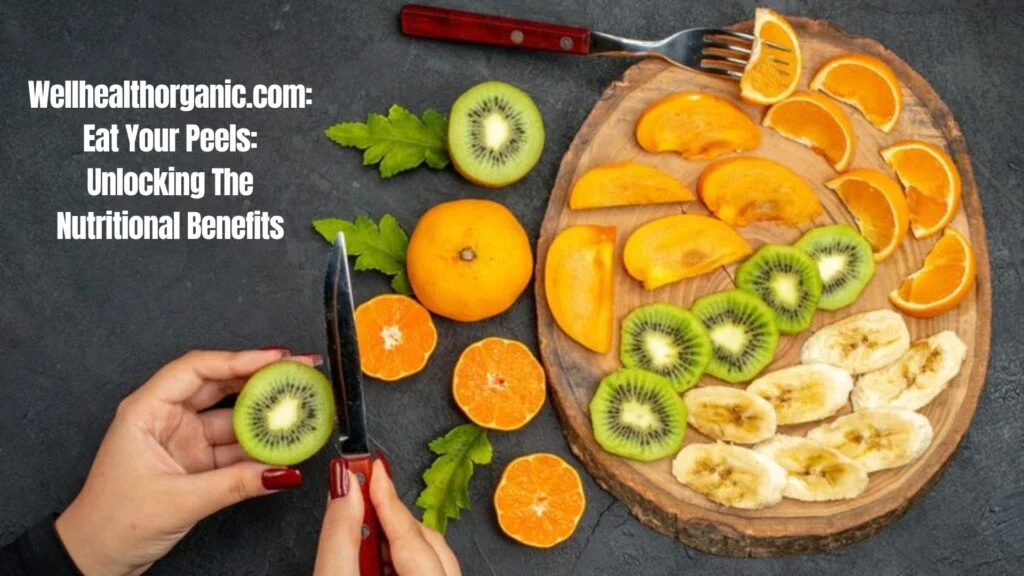Introduction wellhealthorganic.com:eat your peels
In the realm of healthy eating, there’s a prevalent trend to reduce waste and maximize nutrition by utilizing every part of the produce we consume. While most of us are familiar with the benefits of eating fruits and vegetables, we often overlook a valuable source of nutrients found in their peels. wellhealthorganic.com:eat your peels Embracing this concept, wellhealthorganic.com sheds light on the nutritional advantages of incorporating peels into your diet.
Embracing Wholeness The Philosophy of Eating Peels
In the pursuit of wellness, the concept of ‘wholeness’ extends beyond mere consumption. It’s about embracing the entirety of what nature offers, including the often-neglected peels of fruits and vegetables. These outer layers, often discarded, actually harbor a treasure trove of vitamins, minerals, wellhealthorganic.com:eat your peels and antioxidants that can significantly enhance our health.
Nutrient Powerhouses Unveiling the Hidden Gems
 Peels are not just protective layers for fruits and vegetables; wellhealthorganic.com:eat your peels they’re nutrient powerhouses waiting to be unlocked. Take, for example, the humble potato. Its skin contains a substantial amount of fiber, potassium, and vitamin C, offering benefits ranging from improved digestion to enhanced immune function. Similarly, citrus peels are rich in flavonoids and vitamin C, which contribute to heart health and skin rejuvenation.
Peels are not just protective layers for fruits and vegetables; wellhealthorganic.com:eat your peels they’re nutrient powerhouses waiting to be unlocked. Take, for example, the humble potato. Its skin contains a substantial amount of fiber, potassium, and vitamin C, offering benefits ranging from improved digestion to enhanced immune function. Similarly, citrus peels are rich in flavonoids and vitamin C, which contribute to heart health and skin rejuvenation.
Fiber-Rich Allies Boosting Digestive Health
Dietary fiber is essential for maintaining a healthy digestive system, and peels are often dense with this nutrient. By incorporating peels into your diet, you can increase your fiber intake, promoting regular bowel movements, reducing the risk of constipation, wellhealthorganic.com:eat your peels and even lowering cholesterol levels. This fiber content also aids in weight management by promoting a feeling of fullness, curbing unnecessary snacking.
Antioxidant Arsenal Guarding Against Disease
Antioxidants play a crucial role in neutralizing harmful free radicals in the body, thereby reducing the risk of chronic diseases such as cancer, diabetes, and cardiovascular ailments. Many fruit and vegetable peels contain high concentrations of antioxidants, wellhealthorganic.com:eat your peels offering potent protection against oxidative stress. By consuming peels, you arm your body with an antioxidant arsenal to combat the damaging effects of environmental toxins and aging.
Practical Tips for Incorporating Peels into Your Diet
While the idea of eating peels may seem novel, incorporating them into your daily meals can be surprisingly simple and delicious:
- Wash Thoroughly: Ensure thorough cleaning to remove any dirt, pesticides, or wax coatings from the peels.
- Blend into Smoothies: Add citrus peels or apple skins to your favorite smoothie recipes for an extra nutritional boost.
- Roast or Grill: Potatoes, carrots, and beets develop a delicious crispness when roasted with their skins on. Experiment with different seasonings for added flavor.
- Creative Cooking: Get inventive with your cooking by incorporating peels into stir-fries, soups, and salads. Watermelon rind, for instance, can be pickled for a tangy twist.
- DIY Snacks: Bake fruit peels with a sprinkle of cinnamon and sugar for a nutritious snack alternative to chips or candy.
Conclusion
In a world where food waste is a significant concern and nutritional deficiencies are rampant, embracing the concept of whole-food consumption is not just about being mindful—it’s about optimizing health and sustainability. wellhealthorganic.com:eat your peels By recognizing the nutritional potential of peels and incorporating them into our diets, we not only harness their inherent benefits but also contribute to a more holistic approach to wellness. So, the next time you reach for that apple or carrot, remember: the true magic often lies in what we’ve been discarding all along—the peel.
You Many Also Read: trendzguruji.me Computer


